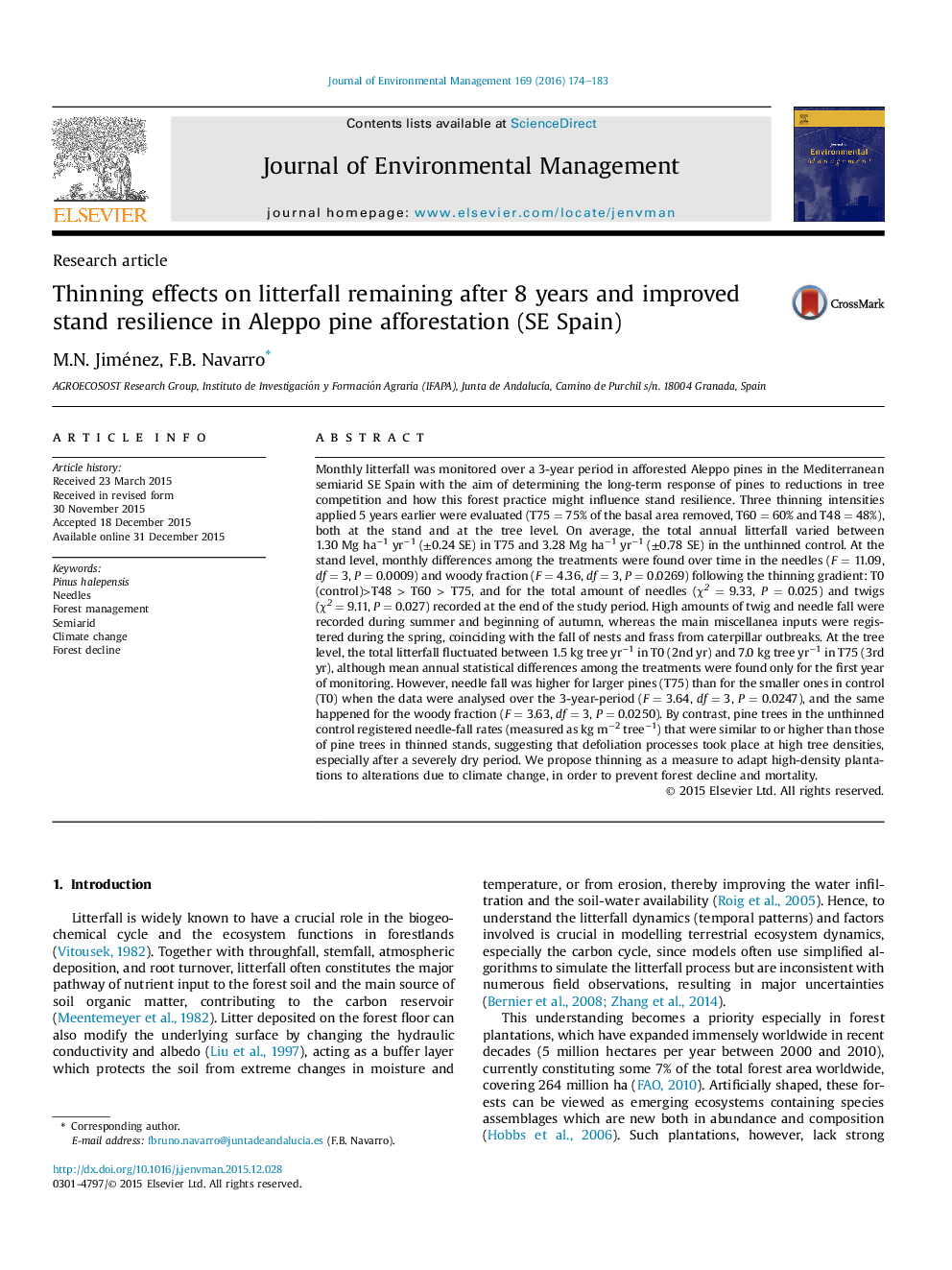| کد مقاله | کد نشریه | سال انتشار | مقاله انگلیسی | نسخه تمام متن |
|---|---|---|---|---|
| 1055448 | 1485243 | 2016 | 10 صفحه PDF | دانلود رایگان |

• The total annual litterfall varied between 1.30 Mg ha−1 yr−1 and 3.28 Mg ha−1 yr−1.
• Most of the monthly litterfall was provided by needles and miscellanea.
• Differences among treatments were found over time in needles and woody fractions.
• At the tree level, the total litterfall fluctuated between 1.5 kg tree yr−1 and 7.0 kg tree yr−1.
• Defoliation processes took place at high tree densities, especially after severely dry periods.
Monthly litterfall was monitored over a 3-year period in afforested Aleppo pines in the Mediterranean semiarid SE Spain with the aim of determining the long-term response of pines to reductions in tree competition and how this forest practice might influence stand resilience. Three thinning intensities applied 5 years earlier were evaluated (T75 = 75% of the basal area removed, T60 = 60% and T48 = 48%), both at the stand and at the tree level. On average, the total annual litterfall varied between 1.30 Mg ha−1 yr−1 (±0.24 SE) in T75 and 3.28 Mg ha−1 yr−1 (±0.78 SE) in the unthinned control. At the stand level, monthly differences among the treatments were found over time in the needles (F = 11.09, df = 3, P = 0.0009) and woody fraction (F = 4.36, df = 3, P = 0.0269) following the thinning gradient: T0 (control)>T48 > T60 > T75, and for the total amount of needles (χ2 = 9.33, P = 0.025) and twigs (χ2 = 9.11, P = 0.027) recorded at the end of the study period. High amounts of twig and needle fall were recorded during summer and beginning of autumn, whereas the main miscellanea inputs were registered during the spring, coinciding with the fall of nests and frass from caterpillar outbreaks. At the tree level, the total litterfall fluctuated between 1.5 kg tree yr−1 in T0 (2nd yr) and 7.0 kg tree yr−1 in T75 (3rd yr), although mean annual statistical differences among the treatments were found only for the first year of monitoring. However, needle fall was higher for larger pines (T75) than for the smaller ones in control (T0) when the data were analysed over the 3-year-period (F = 3.64, df = 3, P = 0.0247), and the same happened for the woody fraction (F = 3.63, df = 3, P = 0.0250). By contrast, pine trees in the unthinned control registered needle-fall rates (measured as kg m−2 tree−1) that were similar to or higher than those of pine trees in thinned stands, suggesting that defoliation processes took place at high tree densities, especially after a severely dry period. We propose thinning as a measure to adapt high-density plantations to alterations due to climate change, in order to prevent forest decline and mortality.
Journal: Journal of Environmental Management - Volume 169, 15 March 2016, Pages 174–183